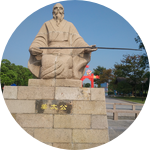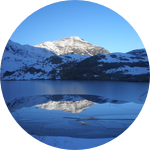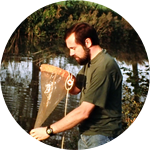About This Project
The River Murray system in Murray Darling Basin (MDB) of Southeast Australia contains vast numbers of shallow floodplain lakes. Some of these lakes are clear while the others are turbid despite their close proximity, and connectivity to the river, and exposure to humans. Our project will devise whether benthic cladocerans in these two contrasting floodplain lakes, show signs of differential timing in water quality through their changes in assemblage and diversity in the past?
Ask the Scientists
Join The DiscussionWhat is the context of this research?
The shallow Murray River lakes of MDB of Southeast Australia are characteristic to macrophyte rich or phytoplankton dominated system. Macrophyte-dominated lakes are clear and have minimal human impacts, while the phytoplankton-dominated lakes are turbid due to increased catchment disturbances. Fossils of benthic cladocerans are preserved in lake sediment and can reflect past water quality change. Barmah Lake (Victoria) and Pikes Creek (South Australia) show contrasts in stable macrophyte vs stable phytoplankton regime despite their close proximity, and connectivity to the river and are exposed to similar human impacts over the past decades . Using benthic cladocerans, we identify the timing of shifts in lake water quality and compare them between the two lakes.
What is the significance of this project?
In Australia, provision of environmental flows and lake water quality to maintain lake ecosystems have the prime objective of restoring degraded system. However, the condition of many Murray River lakes is unknown and the ecosystems of these lakes are facing critical conservation and management challenges today. The use of benthic cladocerans is increasingly becoming a novel approach to address water quality issues due to preservation of their fossils in lake sediment. A fine-scale detection of change in Barmah Lake (macrophyte-state) and Pikes Creek (phytoplankton-state) exposed to similar human impacts over the past decades will allow us to determine timing of shifts in water quality. This will help inform resource managers to apply appropriate restoration measures.
What are the goals of the project?
There are three goals. Firstly, this project will determine the ability of benthic cladocerans, and the novelty of the use of their fossils to infer long term dynamics of water quality and ecosystem change in two shallow floodplains Murray River lakes in Southeast Australia. Secondly, the diversity and assemblage of fossil benthic cladocerans in sediments will help understand the mechanisms behind the differences in varying ecosystem responses to changes of these floodplain lakes which undergoing similar anthropogenic impacts such as river regulation and catchment nutrient loads in the past. Finally, this project will provide some key recommendations that are applicable to resource managers for conservation and management of degraded Murray River floodplain lakes in Southeast Australia
Budget
A total of 60 lake sediment samples (Barmah Lake = 35 and Pikes Creek = 25) of the dated sediment cores are needed to complete for the analysis of fossil benthic cladocerans.
Laboratory analysis including the preparation of fossils and taxonomic identification of fossil benthic cladocerans under a microscope by an expert to be hired for 60 samples would require the cost of the total of 160 hours @ $32 = $5120.
Endorsed by
Meet the Team
Giri Kattel
I am an ecologist and palaeoecologist with expertise in management of lakes and rivers. My passion to work on freshwaters goes back to my childhood time. I grew up in a small village surrounded by rich natural lakes and rivers in the Nepal Himalaya. Following I had a Bachelor of Science degree from Nepal, my passion to learn freshwater sciences grew, and brought me to do an M.Sc. in Freshwater Ecology at the University of Otago (New Zealand). In my M.Sc., I focused my research on the dynamics of modern fish and zooplankton including cladocerans. However, I was deeply interested to understand the long term environmental change including climates and ecosystems of lakes and rivers. My research interests in environmental change in lakes and rivers brought me to do a PhD at the Environmental Change Research Centre of the Department of Geography of University College London (UK). Following PhD, I have been working in various countries, including the UK, New Zealand, Germany, Australia and China to extend my scientific endeavour in different parts of the world. Currently, I am a Visiting Professor at the Chinese Academy of Sciences (Nanjing). Over the past 7 years, I have been working extensively in large river basins of Australia and Asia including the Murray, Yangtze and Mekong River basins. Lately I was awarded the Australia-China Science and Research Fund from the Government of Australia to study resilience of the Murray and Yangtze River basins. Currently, I am one of the international partner investigators of the key National Natural Science Foundation of China (NSFC) project “Resilience of the Yangtze River Basin”
Project Backers
- 2Backers
- 1%Funded
- $9Total Donations
- $4.50Average Donation












